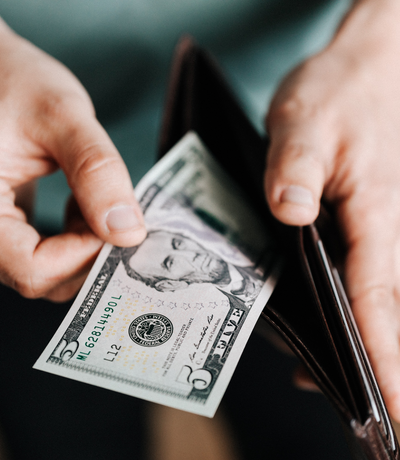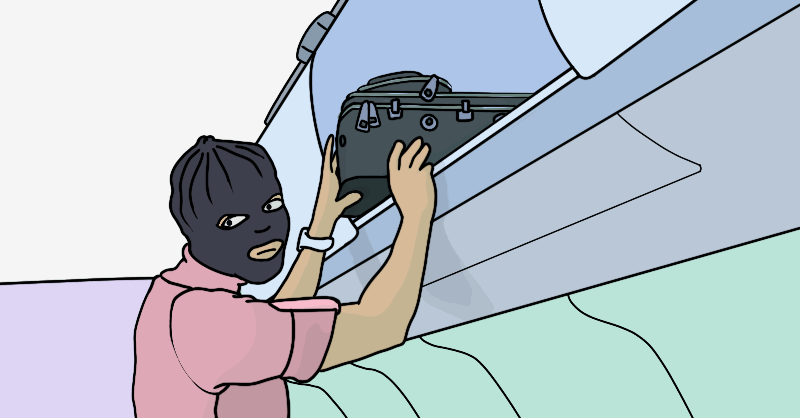How to keep your money safe while traveling
2 June 2023
Money matters have always been complicated for travelers, and advances in technology only go so far. Travelers have also always been easy prey for criminals for many reasons: unfamiliarity being the biggest one.
When you’re unfamiliar with the local customs, the language, the currency, and even how to use the card readers, you’re at a disadvantage. Add jet lag or distractions to the mix and you’re not thinking clearly or completely aware of your surroundings and risk.
In this newsletter, we’ll cover some of the latest ways criminals are getting their hands on travelers’ money and give you practical ways to keep your money safe.

Withdraw cash safely
Today’s cash withdrawal machines are the very definition of efficiency, but technology develops quickly on both sides of the legal spectrum. Criminals can use those highly efficient ATMs to steal credit and debit card numbers with skimming devices. This is true at home and abroad too, so no matter where you go, withdrawing cash comes with some risk.
Skimming devices can be installed on legitimate card readers at gas pumps, point-of-sale terminals, and even ATMs. The devices secretly collect each card’s information and typically a separate device (a camera) collects the PIN typed in when withdrawing cash.
The presence of a skimmer is not immediately obvious, and to be honest, they are getting slimmer and harder to spot. The most frequent locations for a skimmer are the PIN keypad and the card insert slot. In both situations, the device is an attachment or overlay that is placed on the original equipment.
Here’s how to ![]() examine a card reader for a skimming device:
examine a card reader for a skimming device:
- Check for color variations that don’t match the rest of the machine or the next machine over. If the insert slot on one machine is bright green and the one in front of you is black, try to wiggle the card slot to see if it’s loose or comes off.
- Observe the keypad – if it appears raised, loose, or thick, it may be a keylogger overlay to capture PIN numbers.
- Run your hand over the panels to search for tiny attached cameras – they will feel like raised bumps. You may even be able to pry it off.
- Check the slot where the money will come out for sticky tape or any blockage.
Essentially, you are looking for anything loose, sticky, or bulky that doesn’t feel fully attached or legit.
Skimmers obtain a copy of the card’s magnetic strip, which all by itself isn’t enough to do anything much. What the criminals really want is the combination of that strip data and your PIN. Very ![]() tiny cameras can be easily hidden on panels that look legit and are placed next to the insertable reader. This is why you really should cover the keypad every time you press your PIN digits. I find that using my hat, which is always available and offers broader coverage, is better than using my other hand to cover the keypad.
tiny cameras can be easily hidden on panels that look legit and are placed next to the insertable reader. This is why you really should cover the keypad every time you press your PIN digits. I find that using my hat, which is always available and offers broader coverage, is better than using my other hand to cover the keypad.
Since the pandemic, many restaurants and cafes have started using portable devices which are handed to the customer to insert the card and confirm the PIN. Don’t forget to shield the keypad in those situations too – the skimmer could be on the POS device and a person could capture your PIN simply by watching you. Use the same examination process to look for skimmers on those devices too.
Pro tip: try to use ATMs in safer, guarded places like an actual bank instead of those on the streets, and avoid using ATMs in tourist areas as these are more prone to criminal activity.
Bonus tip: In the US and sometimes in other places, you can avoid ATM fees AND skimmer risk by buying something at a grocery store and getting cash back. Local stores are vested in their community’s security and are far less likely to have skimmers. Just be sure to ask before you attempt this because not all places will let you withdraw cash with a purchase.
Be wary of ‘helpful’ strangers
Anywhere I’ve traveled in the world, I’ve encountered wonderful, kind, and helpful people; however, you must be wary of ![]() overly friendly and helpful strangers when making financial transactions.
overly friendly and helpful strangers when making financial transactions.
In some places, those helpful strangers are actually intending to rob you. Here are some examples:
- One person offers to help a traveler get the right train ticket or use the ATM while the other steals your wallet from your backpack.
- One person jovially crowds behind you at ticket counter or ATM seemingly engaged with a friend and not paying attention while they look over your shoulder and memorize your PIN (they may steal the card later or clone it at a restaurant they follow you to).
- One person stumbles and falls on the sidewalk near you, and you stop to help, setting your bags down. Before you know it, your pockets are emptied and the person who tumbled is walking safely away.
In addition to skimming devices, there are card-trapping devices that block the removal of money or the retrieval of a card. Both methods are designed to confuse the customer into thinking that the ATM is defective or has run out of money. Sometimes a helpful stranger will appear to assist the traveler with using the machine and end up walking away with your PIN (which they helped you type in) or even quickly snatching the cash!
If the expected money doesn’t easily slide out of the machine, and the disgusted customer walks away or heads inside the bank to handle the situation, the thief gets away with the cash and/or the card.
Pro tip: If you’re traveling with a companion, position them behind you to watch the surrounding area, decline unsolicited assistance, and block strangers from seeing you type your PIN (but still cover the keypad in case there is a camera you don’t see).
Research digital payment options
If you’re traveling abroad, research what types of payment are preferred so you are prepared. Digital payment options offer convenience and the added security of reducing the need to expose your physical card to potential risks.
Sweden, for example, is known for its high adoption of digital payment methods. The Netherlands also has a high rate of contactless payment technology.
The adoption of contactless payment systems continues to evolve rapidly. Even in countries with widespread adoption, some places may prefer only cash or a credit card. Check the current online payment practices before traveling, and be prepared to pay with more traditional methods.
Divide to protect
Here are the final rules to protect your cash and cards when you travel:
- Travel with two credit cards in case the first gets stolen (and keep them in separate places).
- Have your card and bank info saved to your phone or in the cloud (in case your phone is also stolen) so you can contact them for help if needed.
- If cash is your preferred method of paying, keep what you need for the day’s expenses handy and the rest secured in either the hotel room safe or a locked bag hidden in your room.
- When carrying cash, please keep it in a secured pocket or bag (try a locking purse or use the front inner pocket on your jeans or jacket).
It’s unfortunate but true that travelers and tourists are ![]() prime targets for scammers. You’re out of your element, fascinated by the views, and may not speak the language.
prime targets for scammers. You’re out of your element, fascinated by the views, and may not speak the language.
Remember that staying vigilant and trusting your instincts are essential to protecting yourself against criminal activity and scams while traveling.
Related topics
Damian Tysdal is the founder of CoverTrip, and is a licensed agent for travel insurance (MA 1883287). He believes travel insurance should be easier to understand, and started the first travel insurance blog in 2006.
